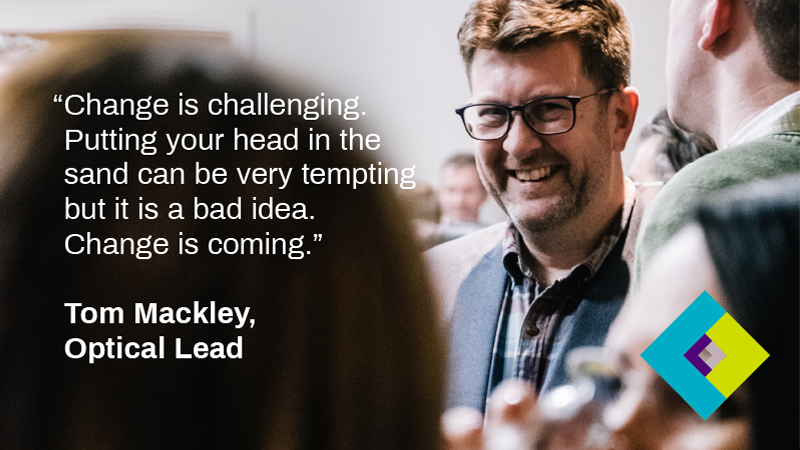2020 Vision
31 January 2020
As February looms, many of those New Year’s resolutions may be a distant memory, proving that a “quick-fix” approach to change is hard to sustain. It is often better to take a long-term view of challenges and opportunities so, over the past few weeks, we’ve been asking some familiar faces to share their thoughts on what the next decade holds for the optical sector…

More, more, more
“Primary care optometry will need to offer more in terms of capacity, more in terms of the types of services being delivered and more in terms of the diversity of services offered.” That is the view of LOCSU COO Richard Whittington, who believes the first half of the decade at least will be focused on alleviating the pressure on acute care services by reducing activity in hospitals. “There will be a continued push toward integration with single pathways running through primary care, community care and acute care,” says Richard.
To respond to the opportunity to deliver more primary care services, Richard says the sector needs to develop confidence to, “show that we have capacity, show that we can evolve services to become more complex and show that we have the relevant skills in the workforce. This will entail optometrists undertaking a diverse range of qualifications and extended learning.” Tom Mackley, LOCSU optical lead, agrees, encouraging clinicians to seize chances to invest in their skills: “Find out what those higher qualifications are and sign up. No one ever regretted becoming more knowledgeable and more skilful.”
Richard’s one wish for the next decade? “Increased collaboration at all levels. We need to be collaborating with our community colleagues and acute care colleagues and stop working in silos. Patients just want the best care in the most appropriate place and the only way we can deliver that is through collaboration.”
Revolutionising the High Street experience – change is coming
Looking at the commercial picture, Tom Mackley calls for a focus on customer experience in the face of disrupted business models and a changing customer demographic: “Spectacle and contact lens revenues are under threat as younger clients find it more natural to buy through the internet. We still have much to offer in both retail and clinical spheres but the retail experience has got to become a lot more special.”
This sentiment was echoed at the recent Opti2020 trade show in Munich, where optical lead Helen Haslett noted a key theme from Zeiss: “Something that really stood out for me was that they said: ‘make every store visit an experience’.” Helen also heard a lot from designers at the show who were focusing on the sustainability of their designs, a trend that will no doubt continue over the coming years.
Tom believes the sector will succeed in providing more primary care services, saying: “Revenue from clinical activity will be a greater part of all optical businesses in ten years’ time.” He believes adapting to this and commercial changes will be the dominant challenge for high street opticians, but it must be confronted head-on, saying: “Change is challenging. Putting your head in the sand can be very tempting but it is a bad idea. Change is coming.”
Tom’s hope for the next decade is that: “Everyone in optics recognises the challenges and opportunities that lie ahead. In ten years’ time my wish is that we are more widely recognised as an invaluable part of the primary health service in this country.”
So overall there are four main thoughts for the future of the sector: Confidence, collaboration, investment in skills and openness to change. Challenging and interesting times lie ahead – we look forward to sharing them with you all!

